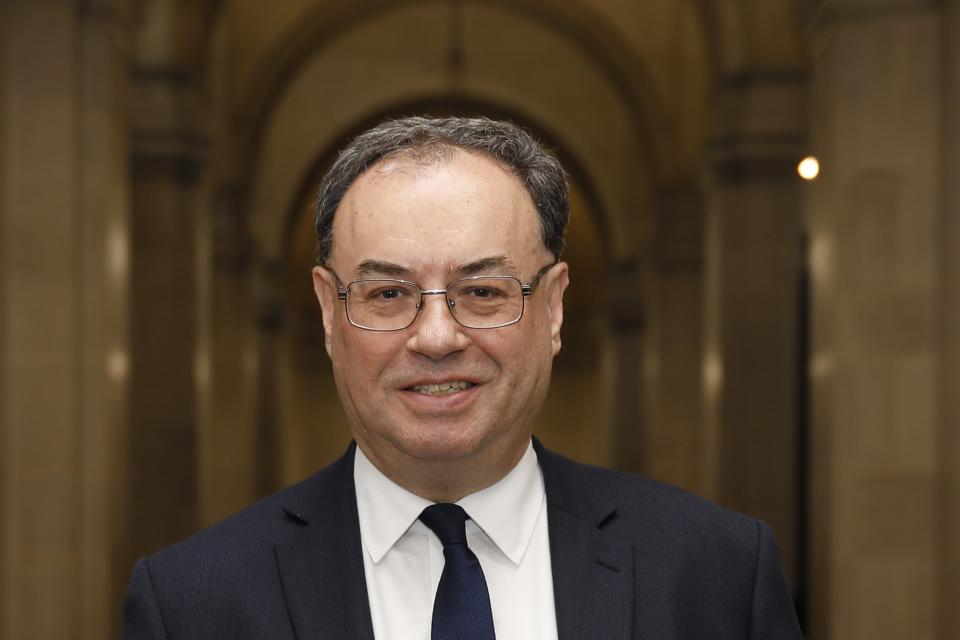Inflation jumps putting fresh pressure on Bank of England to raise interest rates

PRESSURE is rising on the Bank of England to quickly raise interest rates after inflation raced past target for the first time in nearly two years.
Figures today show consumer price inflation (CPI) leapt from 1.5% in April to 2.1% in May as surging costs of fuel, clothes and eating out pushed up prices.
The Bank, led by governor Andrew Bailey, is increasingly at odds with City experts who worry that inflation could quickly get out of control unless Threadneedle Street moves to reduce quantitative easing – money printing that shoves cash into the economy – and raise rates.
It is supposed to keep inflation at 2%, a target it has undershot while the pandemic raged. Today’s rise was far higher than the City expected, forcing even the most sanguine commentators to adjust their positions.
Paul Dales at Capital Economics was yesterday arguing that interest rates wouldn’t rise above their 0.1% low until 2024. Today he said:
“There is a greater level of uncertainty about prices at present, with a possibility that inflation will turn out to be higher if staff shortages persist, triggering stronger wage rises, while cost increases continue to be passed on to consumers. However, with price pressures expected to ease next year and inflation to stabilise around 2%, it is likely that the Bank of England will hold fire and not raise interest rates before 2023.”
Inflation in the US is already at 5% and there is concern that the world’s most powerful economy is “exporting” price rises.
Fuel prices in the UK are rising at nearly 18%.
Ulas Akincilar at the online trading firm INFINOX, said
“Consumer inflation is now surging at an alarming rate. Annual CPI has trebled in just two months, and on this evidence it’s likely to keep climbing. Given that the Bank of England’s mandate is to keep CPI at 2%, klaxons will be sounding in Threadneedle Street.
“Runaway inflation could cool consumer spending and undermine the still fragile economy, and the likelihood of the Bank stepping in before things get any worse is growing by the day.”
The pound rose against the dollar to $1.41 as the figures emerged.
Hannah Audino, economist at PwC, said: “It is important to interpret the latest data in the context of the low prices we saw 12 months ago during the pandemic. We expect the Bank of England to see through the recent rise in inflation and continue to prioritise supporting the recovery with low interest rates, over reducing inflation.
"Inflation is unlikely to follow a smooth path this year, with many different factors feeding irregularly into the monthly data. In general, inflation is likely to follow an upwards trend as the economy reopens, allowing consumers to unleash some of their estimated £180bn of excess savings. We might see businesses raising prices in order to recoup lost revenues and also in response to rising input costs such as freight and raw materials."
Freetrade analyst David Kimberley said: “Today’s numbers are likely to add more fuel to the inflation narrative fire we’ve seen blazing over the past couple of months, although it’s hard to envisage any major market movements off the back of them. The latest figures are being compared to last May, which was a relatively low number, so any sizable increase is going to look bigger than it might otherwise have done. Compare the numbers on a month-on-month basis and things look fairly normal. That makes it hard to buy into the line of thinking that suggests we’re on the road towards Weimarian hyperinflation or even the 1970s.”
Paul Craig, portfolio manager at Quilter Investors, said: “Unfortunately, much of the inflation that is coming through is bad inflation and hitting lower income households in the pocket. How long these price rises continue remains to be seen. Will inflationary pressures be self-defeating or resolved as pent-up demand dissipates or is met with increasing supply. But should it become sustained then it risks making the recovery even more uneven than it already is and thus, it will ultimately fall to government to pull the fiscal levers as it continues in its levelling up agenda.”
Jack Leslie at the Resolution Foundation, said: “Inflation has risen sharply in recent months and will rise further as the impact of higher commodities prices feed through the supply chain. But UK inflationary pressures are different – and nowhere as near as large – as those causing fierce debate in the US.“Looking ahead, with the medium-term outlook for inflation in the UK still relatively benign, policy makers should look beyond today’s figures and worry far more about rising unemployment than rising inflation.”
Read More
‘Post-lockdown’ spree sends prices surging
Addison Lee buys black taxi rival to create London’s biggest cab firm

 Yahoo Finance
Yahoo Finance 